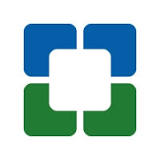Prediction of Development of Scapular Notching Following Reverse Total Shoulder Arthroplasty
| Status: | Completed |
|---|---|
| Conditions: | Arthritis, Osteoarthritis (OA), Orthopedic |
| Therapuetic Areas: | Rheumatology, Orthopedics / Podiatry |
| Healthy: | No |
| Age Range: | Any |
| Updated: | 4/2/2016 |
| Start Date: | January 2014 |
| End Date: | July 2014 |
| Contact: | Joel Kolmodin, MD |
| Email: | kolmodj@ccf.org |
Prediction of Development of Scapular Notching Based on Glenosphere Positioning, Scapular Morphology, and Simulated Impingement-free Motion Using Three-dimensional Computed Tomography Analysis
The hypothesis is that computer simulated bony impingement of the bone surrounding the
spherical glenoid implant (the glenosphere) along the scapular neck on three-dimensional
(3-D) computed tomography (CT) imaging analysis is predictive of the location of clinical
scapular notching that develops following reverse total shoulder arthroplasty (TSA).
spherical glenoid implant (the glenosphere) along the scapular neck on three-dimensional
(3-D) computed tomography (CT) imaging analysis is predictive of the location of clinical
scapular notching that develops following reverse total shoulder arthroplasty (TSA).
The Specific Aims are:
- Determine the relationship between lateral glenoid offset and the development of
scapular notching following reverse TSA
- Determine the ability of 3-D preoperative planning tools to define areas of scapular
bony impingement on kinematic simulated shoulder range of motion that predict the
development of scapular notching
- Compare the precision and accuracy of plain radiographs (2-D) versus CT (3-D) for
measurement of scapular notching and postoperative implant position following reverse
TSA (2-D versus 3-D)
- Determine the implant and anatomic factors that best correlate with clinical outcome
following reverse TSA by retrospective analysis
- Determine the relationship between lateral glenoid offset and the development of
scapular notching following reverse TSA
- Determine the ability of 3-D preoperative planning tools to define areas of scapular
bony impingement on kinematic simulated shoulder range of motion that predict the
development of scapular notching
- Compare the precision and accuracy of plain radiographs (2-D) versus CT (3-D) for
measurement of scapular notching and postoperative implant position following reverse
TSA (2-D versus 3-D)
- Determine the implant and anatomic factors that best correlate with clinical outcome
following reverse TSA by retrospective analysis
Inclusion Criteria:
- All patients having undergone reverse TSA at the Cleveland Clinic with a high quality
preoperative CT of the operative shoulder and a minimum of two years out from surgery
Exclusion Criteria:
- All patients having undergone reverse TSA at the Cleveland Clinic with no
preoperative CT or a low quality preoperative CT of the operative shoulder and/or
less than two years from surgery
We found this trial at
1
site
Cleveland Clinic Foundation The Cleveland Clinic (formally known as The Cleveland Clinic Foundation) is a...
Click here to add this to my saved trials
